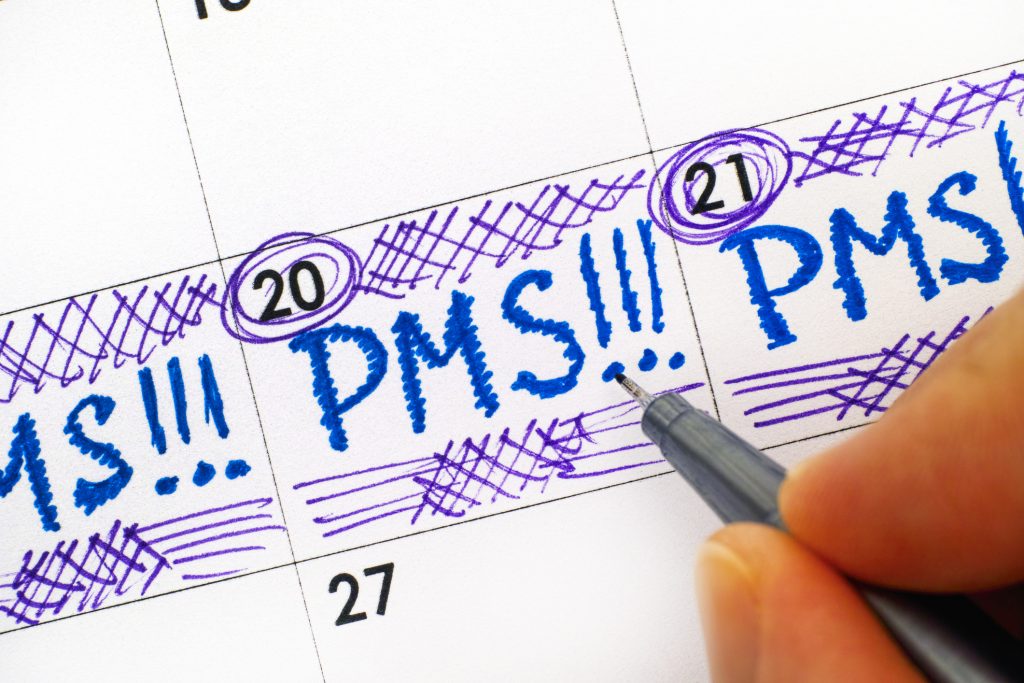PMS myths and truths

Setting the record straight on “the time of the month” that comes before “THAT time of the month.”
Does PMS really make women moody? Do women really get salty-sweet cravings before their monthly visitor? Does exercise make PMS worse? And, are women “hormonal” or do they have trouble with relationships when their periods are around the corner?
While the statistics vary, according to the American College of Obstetricians and Gynecologists, premenstrual syndrome (PMS) affects some 75% to 85% of women. PMS refers to symptoms a woman may have one or two weeks before her menstrual cycle. It’s not a one-size-fits-all phenomenon, and some women have more severe symptoms known as premenstrual dysphoric disorder (PMDD).
Common symptoms of PMS and PMDD include irritability, depression, anger, bloating and aches.
While TV shows, movies and even the standup comedy circuit have numerous PMS-related jokes, for women who suffer PMS, it is definitely no laughing matter. There is no one reason why some women suffer PMS symptoms and others don’t. But there is a lot of misinformation about this monthly event.
So, let’s set the record straight on what’s fact and what’s fiction.
Myth: Every woman has PMS.
Truth: Not all women have PMS. There are women whose bodies go through the luteal phase – a stage of the menstrual cycle that occurs after ovulation and before the period starts – without experiencing PMS.
Myth: All PMS symptoms are the same.
Truth: Just as each woman is her own person, each woman with PMS reacts differently. Some women have symptoms that run the gamut from emotional to physical, and from social to cognitive, while others “only” experience pain. Some women don’t suffer from PMS at all.
Myth: PMS is a modern-day invention.
Truth: PMS was known in ancient times. According to the US National Institutes of Health, ancient Greek physician Hippocrates was the first to propose that women experience behavioral changes in the lead up to menstruation. He wrote about headaches and heaviness as signs of the menstrual cycle.
Myth: Women are “hormonal” during PMS.
Truth: When someone says that a woman is “hormonal,” it’s typically an insult, so using that term is not helpful. PMS is women’s response to hormonal changes when their period is approaching. The physical and emotional symptoms associated with the phase before menstruation are thought to be a response to rising and falling levels of hormones (such as estrogen and progesterone). Most women with PMS have normal hormone levels.
Myth: You cannot inherit PMS.
Truth: If your mom had PMS symptoms, you’re likely to have them, too. According to the US National Institutes of Health, a 1971 study showed a strong link between mothers and their daughters in terms of premenstrual tension. The study also showed numerous similarities in the subgroup of PMS symptoms. When mothers had symptoms including anxiousness, fatigue, and irritability, 69.8% of the daughters had similar symptoms.
Myth: PMS is the worst in your teens, when you first start getting your period.
Truth: It may be disappointing to hear, but symptoms of PMS may worsen in your late 30s or 40s and as you approach menopause, according to the US Department of Health and Human Services. This situation is particularly relevant for women whose moods are sensitive to hormonal changes during the menstrual cycle. Fortunately, when you reach menopause and you no longer get your period, PMS stops.
Myth: Exercise makes PMS worse.
Truth: Exercise helps balance your hormones. If you aren’t moving your body enough, PMS symptoms can actually get worse. Research studies show that exercise, and especially aerobic exercise, can help improve symptoms related to PMS.
Myth: PMS food cravings are imaginary.
Truth: Actually, food cravings are among the most prevalent of PMS symptoms. During the menstrual cycle, our hormones fluctuate, with estrogen and progesterone levels rising and falling. These levels may influence chemicals in the brain, including a brain chemical called serotonin, which affects mood. Studies published by the US National Institutes of Health show that carbohydrate consumption can increase serotonin release. Carbs can be salty or sweet.
Myth: PMS and your period are one and the same.
Truth: There’s a reason the word “pre” is in the word “premenstrual” when talking about PMS. PMS and having your period are most definitely not one and the same thing. PMS refers to the time before your period. PMS symptoms come on in the lead up to menstruation; they typically stop when menstruation starts.
Myth: Nothing helps PMS symptoms besides medications.
Truth: From more exercise to nutritional supplements, a better balanced diet to anti-depressants and alternative treatments, there are many ways to take on the symptoms of PMS. By nature, each woman will react differently to available solutions.
Speak YOUR truth
If you are suffering from PMS symptoms, know that you are not alone. An average woman gets her period about 400 times in her life. This means that women with PMS may also suffer from PMS that many times. So, speak up and seek solutions that help you feel better.



